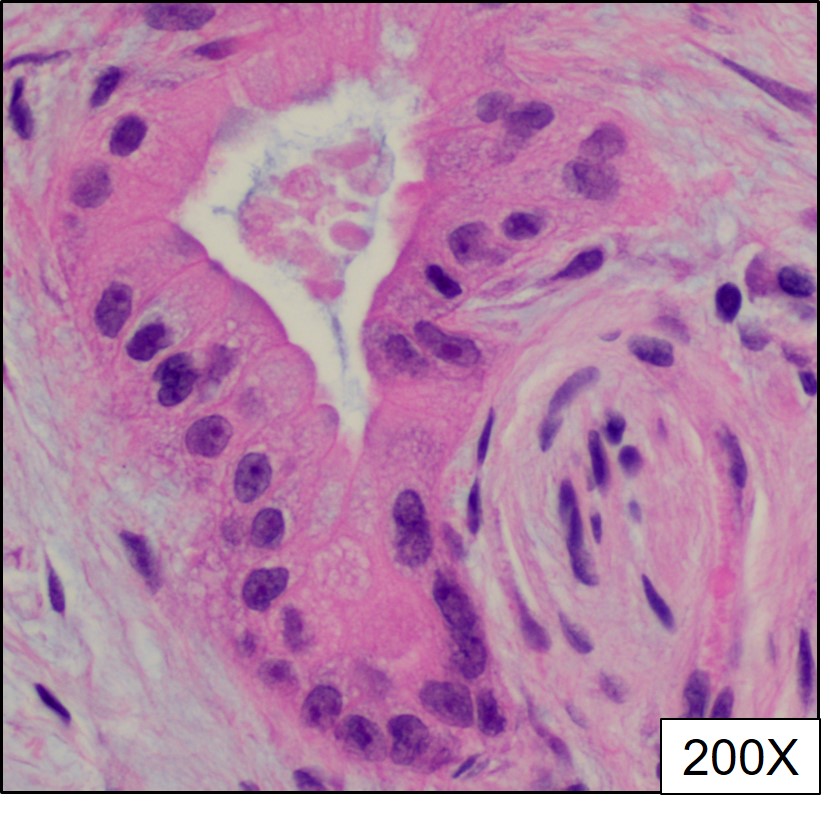Case Presentation: This is an 81 years old man presented with unintentional weight loss of 30 pounds in a year. He had history of diabetes type II and 20-pack-year smoking history. Extensive workup at the primary care clinic was unremarkable. CT of chest, abdomen and pelvis identified multiple lung mass, lymphadenopathy and an ill-defined pancreatic lesion. Subsequent PET scan showed focal activity of the aforementioned masses. Endobronchial ultrasound (EBUS) biopsy of right lower lobe nodule, hilar and mediastinal lymph node confirmed poorly differentiated adenocarcinoma. Immunohistochemical stains was positive for TTF-1, and negative for p40. Endoscopic ultrasound guided pancreas needle core biopsy found well-differentiated invasive ductal adenocarcinoma negative for TTF-1. This staining pattern and histologic difference would be consistent with a primary pancreatic adenocarcinoma independent of the pulmonary lesions. Patient received chemoradiotherapy for lung cancer first given the severity of the lung cancer. Carboplatin and pemetrexed were started together with radiation. Despite our effort, repeat CT showed evidence of disease progression in the lung. As for the pancreatic cancer, the baseline CA 19-9 was 340 U/mL. Upon completion of lung cancer treatment, capeditabine with radiation for pancreas was provided. Repeat image 4 months after initial diagnosis showed shrinkage of the pancreatic lesion. The CA 19-9 also decreased to 61 U/mL.
Discussion: Synchronous multiple cancers are multiple primary tumors diagnosed within six months interval. As a result of the progress in diagnosis and treatment of cancers, more patients are found with multiple primary tumors. Among the various combination of synchronous tumors, the presence of both primary pancreatic and lung cancers is extremely rare. There are only a few case reports in the literature. Clinician should not assume the synchronous masses are metastatic. Early diagnosis and treatment are crucial due to the prognosis difference in metastatic pancreatic cancers and synchronous primaries. Two separate biopsies should be pursued to confirm the two primary cancers. The treatment guideline of synchronous cancers is not well-established. It is challenging to have a therapy that covers multiple cancers. The initial treatment can focus on the more advanced malignancy since the overall prognosis is dependent on the more aggressive cancer.
Conclusions: Biopsy of separate lesions should be performed to recognize synchronous primaries. Early recognition of two primary cancers is important to initiate personalized treatment that often targets the more aggressive malignancy first.


